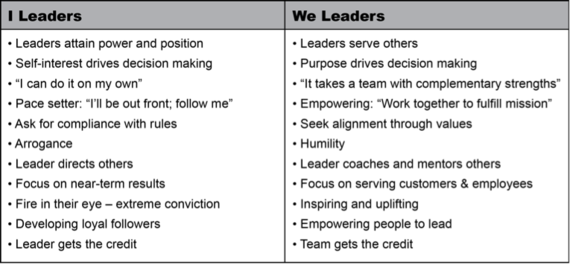 Throughout Discover Your True North, successful individuals discuss how they became authentic leaders. This forum is a chance to delve deeper into the thoughts and journeys of these influential leaders. In this profile, we will talk about empowerment with former Xerox CEO Anne Mulcahy.
Throughout Discover Your True North, successful individuals discuss how they became authentic leaders. This forum is a chance to delve deeper into the thoughts and journeys of these influential leaders. In this profile, we will talk about empowerment with former Xerox CEO Anne Mulcahy.
Thank you for your time, Anne. You certainly experienced a crucible at the very beginning of your leadership at Xerox. Can you tell us about it?
Of course. When I took the helm at Xerox, we were bottoming out. I didn’t realize it at the time I was picked to be CEO, but I learned very quickly that the company was on the brink of disaster. We literally had only one week’s reserve of cash in the bank, and we were $18 billion in debt.
That’s a staggering figure. It must have been a shock.
Oh, it was. Our advisors were telling us to declare bankruptcy, my CFO was embroiled in an SEC investigation into our revenue recognition practices … it felt like being on the deck of the Titanic. It was a true crisis. To make it worse, my background was not in finances, or even in R&D. I was a salesperson first, and then worked my way into an executive role, but when it came to a crisis of this nature I really needed help.
It sounds like leadership challenge few people could rise to meet.
I don’t know about that. I believe people, especially good leaders, have a true strength inside them, a power that comes out when they’re put to the test. And I found out that I did. I simply was not willing to let my company fall into bankruptcy, and ruin the financial lives of the people who worked for us, who had worked so hard and given so much for a company they loved. I just wasn’t.
Ursula Burns, who would become my successor, said it best: “What do you say when times are tough? ‘Thank you very much, I’ll see you later?’” Ursula said that’s not what her mother taught her, and that’s exactly how I felt. I was not turning my back on my company or my people. I was willing to go to war for them, if that’s what it took. Ursula led the renewal of our R&D and manufacturing operations and made them competitive globally, and now is doing a superb job in leading the company.
You have a true fighter’s spirit, Anne. That much is clear. But what did you have to fight with? How did you win that war without the background or the experience in the financial world that you needed to understand the situation?
It’s simple: I counted on the people around me.
Leadership is not a lone enterprise. It can’t be. Too much depends on the success of a large corporation like Xerox for one person to depend only on her own talents and skills to get through a crisis. I needed a support group — I needed a team.
So I asked for it. I sat down with 100 of our top executives, was completely honest with them about the state of the company, and then asked them whether they were willing to fight with me. I told them they’d have my blessing if they chose to leave, but that I needed fighters by my side. All but two of them stuck with the company. It was such an uplifting moment.
I surrounded myself with my financial and R&D team, and had them grill me on specifics until I understood the aspects of my company I needed to know in order to successfully lead us.
And then I made sure that everyone talked to each other. I visited offices, I rode with salespeople, I fostered ongoing conversations between senior managers to problem-solve — I did everything I could think of to create relationships both within and outside of our organization. Because in the end, your relationships will save you. You cannot build loyalty without building relationships. And that’s what it took to turn the tide at Xerox: loyalty, and determination, and passion for our company. Everyone had to feel empowered to give their all, and feel accountable to each other for the results. They did, and it worked.
Did you ever think of giving up? Giving in and declaring bankruptcy?
No. It simply wasn’t an option for me. That doesn’t mean I didn’t have hopeless days. I did — quite a few of them. It was a very challenging time. But again, relationships will get you through even the worst moments. I remember one particularly awful day, getting a voicemail from my friend Jim Firestone, who was then our chief strategist. He said that he believed in me — that they, my leadership team, believed in me. That was what I needed to hear to keep fighting.
I also had Warren Buffett on my side, which was powerful. He was one of the voices who suggested that the leadership team get out with our salespeople and hear firsthand what our customers needed. Times were tough but I never felt alone.
Well … it worked. Xerox reported more than $1 billion in net income in 2014. That’s quite a turnaround!
I’m so proud of my company. I’m proud of Ursula and her work since 2009 — she had quite a crucible with the economic downturn in ‘08, too, and she brought the company through it. We’ve come a long way.
Thank you, Anne, for sharing your inspiring story. We know it will encourage others who encounter hard times, whether in their businesses or in their lives.
I appreciate the chance to talk to you. And I hope I can stress to your readers that it takes a team to come through those hard times. It takes a “We” attitude — a willingness to lead from a place of collaboration, and to empower your team to do the best work they can, together, to meet their goals. Today’s leaders need to be cooperators and collaborators, not authoritarians. It really does work better that way. I never could have succeeded at Xerox without the support of every single person who was willing to pull together and say, “We will win this fight.” Fostering that kind of spirit is what leadership is all about.

 At a youth soccer game, four-year-olds swarm a ball. It’s a mass of kids pushing and shoving while, on the opposite end of the field, a few rogue players pick flowers. It’s a wonderful chaos, full of frantic laughter and smiling faces. But you’re distracted because your hip keeps buzzing. With the advent of smartphones, will we ever disconnect again?
At a youth soccer game, four-year-olds swarm a ball. It’s a mass of kids pushing and shoving while, on the opposite end of the field, a few rogue players pick flowers. It’s a wonderful chaos, full of frantic laughter and smiling faces. But you’re distracted because your hip keeps buzzing. With the advent of smartphones, will we ever disconnect again? Four years after its creation, the Mayo Clinic Center for the Science of Health Care Delivery kicked off its inaugural Delivery Science Summit on Wednesday.
Four years after its creation, the Mayo Clinic Center for the Science of Health Care Delivery kicked off its inaugural Delivery Science Summit on Wednesday.
 Are you the hero of your own journey? Or are you a servant-leader who empowers others?
Are you the hero of your own journey? Or are you a servant-leader who empowers others?
 Just when we thought we were past the corporate scandals of the past decade, two new crises have emerged at large global companies –
Just when we thought we were past the corporate scandals of the past decade, two new crises have emerged at large global companies –